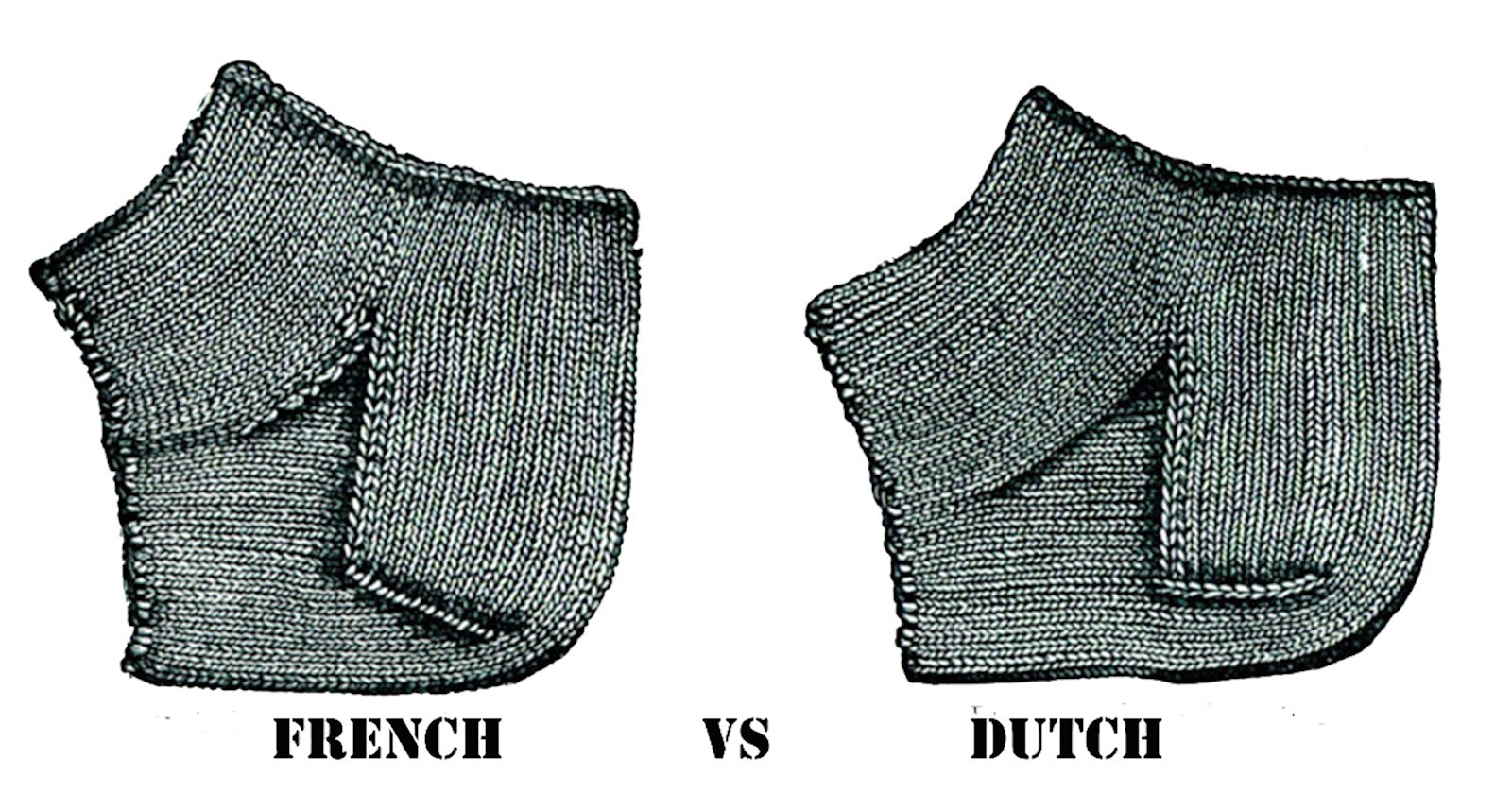In a past article, we took a look at nine sock heel types from Weldon’s Practical Stocking Knitter. As I puzzled over the 19th-century instructions for working these heels, scrutinizing the illustrations, I thought to myself: “I wish I had a photo of these things.”
Well, it dawned on me that I have a copy of Nancy Bush's ebook, Vintage Socks to Knit, which reproduces and updates nineteen sock patterns from Weldon’s. Perhaps some of those socks used the heel types I found in Weldon’s Practical Stocking Knitter, First & Second Series?
Indeed, I found that Nancy Bush uses two heel types frequently in her book: the French heel and the Dutch heel. Let’s look at the Weldon’s illustrations of these two types:
 Illustrations from Weldon’s showing the side view of the French heel (left) and the Dutch heel (right)
Illustrations from Weldon’s showing the side view of the French heel (left) and the Dutch heel (right)
And here are two lovely examples of these heels in patterns from Vintage Socks to Knit:
 Left: The French Sock was a children’s pattern in the original Weldon’s; Nancy has upsized it for a woman, while otherwise retaining the original design. This sock features a French heel and a flat toe. Right: This handsome men’s sock, with the cozy and inviting name “Plain Winter Sock,” uses a Dutch heel and wide toe. Photos by Joe Coca
Left: The French Sock was a children’s pattern in the original Weldon’s; Nancy has upsized it for a woman, while otherwise retaining the original design. This sock features a French heel and a flat toe. Right: This handsome men’s sock, with the cozy and inviting name “Plain Winter Sock,” uses a Dutch heel and wide toe. Photos by Joe Coca
So how are these heels worked, and what makes them different? They look similar both in the illustrations and knitted socks. It turns out, they’re not that different from each other—the key difference being the heel turn. Check out my swatches of the heels below.
 Lisa’s flattened swatches showing the French heel and the Dutch heel. Photo by Lisa Shroyer
Lisa’s flattened swatches showing the French heel and the Dutch heel. Photo by Lisa Shroyer
When you lay the bottom of the heel flat, you can see that the heel turn creates a wide, square shape in the Dutch heel, whereas it’s a more acute V shape in the French heel. This is because the Dutch heel begins its shaping well beyond the midpoint of the heel flap, while the French heel starts decreasing just two stitches beyond the midpoint of the flap. In addition, the French heel calls for a plain stitch worked beyond the decrease, whereas the decrease is the last stitch before turning in the Dutch heel.
Weldon’s recommends the French heel for people with high insteps, which I believe is because it ends with more stitches than the Dutch, which means you will have a deeper gusset before you decrease down to the foot stitch count. Having a more pointed heel, the French most likely has a neater fit, as well. But the French is just a variation on the Dutch—both use short-rows and decreases to create a turned heel, and both are followed by picked-up gussets that are then decreased out. Both of these heels will be simple and familiar to modern knitters, for whom the short-row heel is a commonly encountered technique.
Nancy Bush’s Vintage Socks to Knit for the sock patterns above, plus seventeen more for babies, children, women, and men, are all reproduced from the Weldon’s needlework series. The Weldon’s patterns that Nancy drew her inspiration from can be found in this ebook.
Lisa Shroyer is a former editor for Interweave Press.
Originally published December 15, 2016; updated May 20, 2019; updated September 23, 2022.

